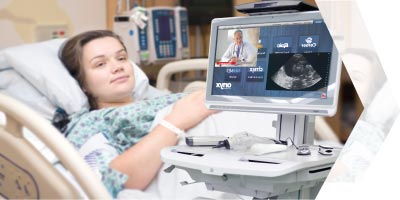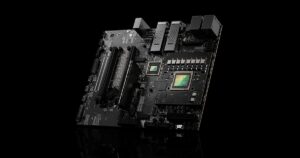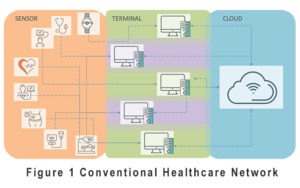As one of the shortcomings in the rapid deployment of mobile workstation-on-wheel (WOW), what has occurred is a productivity paradox due to long recharging time of 5+ hours. The mobile WOWs that were intended to provide real-time patient side care actually turned into double charting efforts between physician/nurse notepad used by patient side and workstation-on-wheel plugged in sitting in the hallway. Healthcare providers like North Kansas City Hospital have deployed battery powered mobile WOWs to enhance workflow efficiency and interoperability between disparate EHR systems; however, the lack of user behavior friendly design of the tradition battery powered mobile workstation has resulted in a reduction in productivity.
Traditional battery powered workstation nowadays are designed with a total of 3 top insertion style hot swappable batteries to achieve more than 8 hours operation time, and battery bins are sealed with revolving door cap to provide minimal ingress protection against liquid during disinfection process.
Based on the user experiences in hospital environment, top insertion battery bin design is often vulnerable against push down insertion mechanism and easily result in physical damages to both battery bin and battery itself. After rounds of shifts, these damaged batteries will cause epidemic failure in the field and workstations are left with damaged battery bins impossible for service repair.
Throughout chaotic patient rounding, opening door caps of battery bins not only propose extra steps in battery swapping but also exposes vulnerability of door hinge against aggressive wear-and-tear usage. In the incident where battery door caps are not closed properly, liquid from cleaning agent can instantly damage the unit and turn into operation downtime.
From the total cost of ownership and workflow continuation perspective, traditional battery powered workstations require 3 batteries operating simultaneously to survive through a regular shift, but each battery charging bank only supports simultaneous charging of maximum 4 batteries that requires 5+ hours to be fully recharged. Healthcare provider is burdened with the need to equip each workstation with at least one battery charging bank (1:1) to support continuous operation given the long battery
recharge time of 5+ hours.
Overcoming Field Challenges with VENUS Mobile Workstation by ONYX Healthcare USA
To allow physicians with easy one-touch access to multiple EHR systems and free nurses from double charting on heavy duty workstation-on-wheel during patient rounding, ONYX has brought to healthcare professionals the 22” VENUS Mobile Workstation. As a medically (UL/EN60601) certified solution, VENUS Mobile Workstation featuring two 300g hot swappable
batteries and fanless design with Skylake Core i7-6600U Dual Core and Bay Trail J1900 Quad Core CPU processing power is safe to operate even within the surgical suite setting and enables real-time EHR access on wheel for telemedicine and mobile pharmacy. Side insertion and seamlessly self-sealed battery design makes battery swapping convenient with IP65
water/dust proof protection.
Each VENUS workstation only requires 2 batteries to operate through the regular shift, and every 3 VENUS workstations can be supported simultaneously by a single 6 slots battery charger (3:1) that fully recharges all 6 batteries within 2.5 hours.
Leveraging pre-loaded ONYX ORION management software, facility administrator can conduct real-time monitoring of the workstation and battery status to provide remote service support as needed.
With storage and removable media encryption protected by Intel security and hardware security provided by smart card reader and RFID features, physicians and nurses can safely access real-time clinical data and patient records from multiple EHR systems on one page to make an informed clinical decision without sitting down at a desk.














